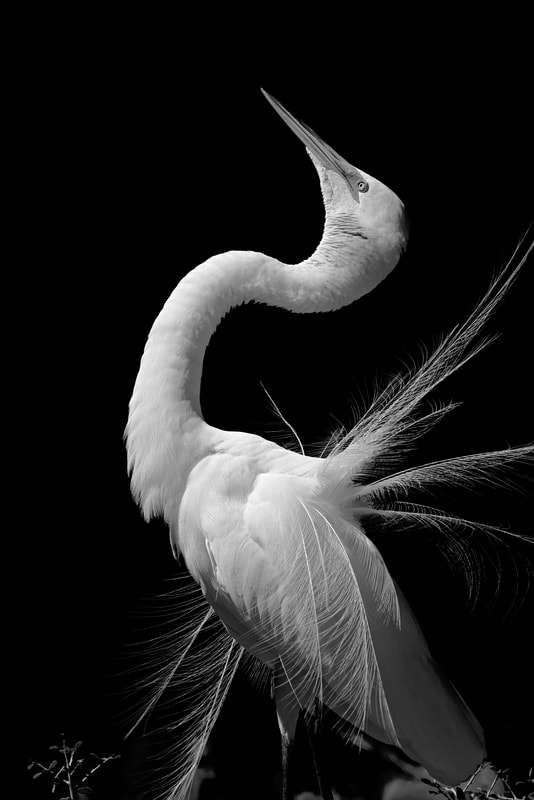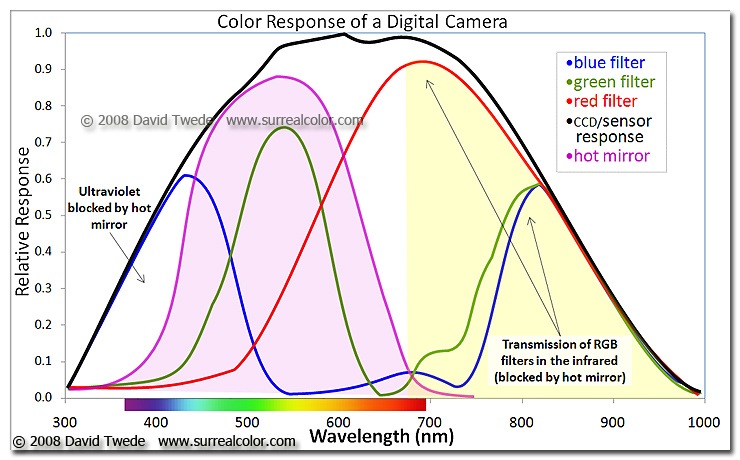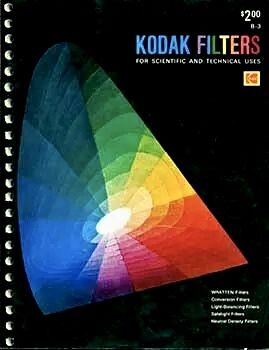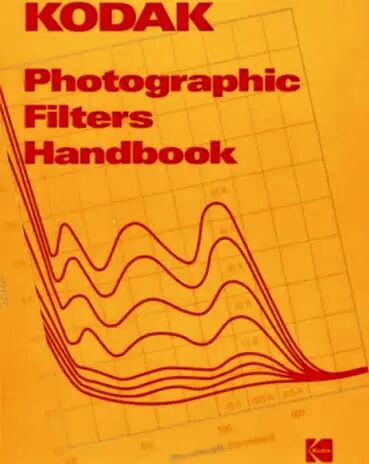Colour Filters in Black & White Photography
Apr 22, 2024 07:20:10 #
Artcameraman
Loc: Springfield NH
Yes, they have made silk looking purses but that's not the subject here. Grayscale is grayscale and not anything else even though they all have each other. at 830-850nm you only get grayscale if you keep it pure but the color of the rainbow is just that.
Apr 22, 2024 20:23:37 #
I use the colour filters with moderation in Photoshop after converting my colour shot to B and W. Does a great job with tonal qualities.
Apr 23, 2024 07:39:25 #
Artcameraman
Loc: Springfield NH
Peter Duce wrote:
I use the colour filters with moderation in Photoshop after converting my colour shot to B and W. Does a great job with tonal qualities.
Would like to re examples. Thanks.
Apr 23, 2024 08:31:47 #
Artcameraman wrote:
Would like to re examples. Thanks.
It's not rocket science:

Minus blue and cyan:

Apr 24, 2024 07:59:52 #
petrochemist
Loc: UK
nikon123 wrote:
OK - I have attached three b&w images, created by me, but none with a physical colour filter or a post processing use of colour filter. Indulge me please, what filter, if any, would you recommend to make a significant improvement to any one of these images?
I presently use Luminar AI as pp software. I m about to acquire Luminar Neo. I do not want the learning curve required by Lightroom. Would Nik also be a good addition?
I thank you in advance, truly.
I presently use Luminar AI as pp software. I m about to acquire Luminar Neo. I do not want the learning curve required by Lightroom. Would Nik also be a good addition?
I thank you in advance, truly.
That depends on the colours present when shot, as the filters darken their complementary colours.
Adding a red filter will dramatically darken blue parts of the image compared to the remainder, it will have a less severe effect on greens & yellows but will darken them somewhat compared to reds...
Red, orange & yellow filters are all used in B&W landscape shooting to darken blue skies to different extents.
I gather green filters were considered useful for portraiture (darkening reds subtlety which would help with rosey cheeks, but IMO would bring out spots too)
If you're shooting digital (on nearly all models) the best option is to shoot colour then play with virtual filters in post processing. I find Nik's silver effects excellent for this - but I grabbed a free version, before they started charging for it again :) Many photo editing packages will have the ability to do something like this, so check out your existing software first.
Apr 24, 2024 10:55:39 #
Timmers
Loc: San Antonio Texas.
petrochemist wrote:
That depends on the colours present when shot, as ... (show quote)
All nice standard information that is froth with errors. The opposite of Red is Cyan (look at the color balance window in any Photoshop program. Most everyone confuses Cyan with Blue, Blue is half of Cyan, but Blue is actual Cyan minus the green.
In landscape work, the 'atmosphere' is vary controlled by a green filter, while a yellow filter reduces or removed the atmospheric haze that gives us the sense of density and shows as haze and so moisture in the air.
Many, many B&W analogue (film) photographers get lost in the common dogma of 'known' filters. There is category of filters for B&W work referred to as 'minus filters' these are the Wratten 44a, 32, and 12.
The 12 is the more extreme of the Wratten 15 (Kodak designated it long ago as the "G" filter and that is often how it is still referenced to as, this day; known the world around as Blue Blocker Sunglasses and used in Ski Goggles. Ansel Adams used the Wratten 15 almost exclusively for land scape work (not the Wratten 25- Red filter).
These filters are called Minus Filters because the block one area of the visible spectrum, while passing the other two areas of light (color).
The Wratten 32 looks like the 'fish eggs' sports man use to do fishing and the 44a is a filter that is deep dark, almost neutral color, that suppresses red.
Apr 24, 2024 17:33:34 #
Timmers wrote:
These filters are called Minus Filters because the block one area of the visible spectrum, while passing the other two areas of light (color).
Nearly all filters are "minus" filters.
The rest are either clear (nothing is blocked) or cut filters that block light that is not visible but which would record on digital sensors or film below or above the visible wavelengths.
None of the minus filters can cut off a specific range of wavelengths. Red, green and blue sensitivity areas overlap.
Even the cut filters need a narrow range of wavelengths to accomplish the cut.

Apr 24, 2024 23:37:57 #
Timmers
Loc: San Antonio Texas.
selmslie wrote:
Nearly all filters are "minus" filters.
The rest are either clear (nothing is blocked) or cut filters that block light that is not visible but which would record on digital sensors or film below or above the visible wavelengths.
None of the minus filters can cut off a specific range of wavelengths. Red, green and blue sensitivity areas overlap.
Even the cut filters need a narrow range of wavelengths to accomplish the cut.
The rest are either clear (nothing is blocked) or cut filters that block light that is not visible but which would record on digital sensors or film below or above the visible wavelengths.
None of the minus filters can cut off a specific range of wavelengths. Red, green and blue sensitivity areas overlap.
Even the cut filters need a narrow range of wavelengths to accomplish the cut.
Vary nice generic and generalized information.
If you need or want information on the exact nature of any Wratten filter, then consult the Wratten section of the Handbook of Physics and Chemistry. There you will find any and all details of stability, life and spectral range (including lab made filters, these are the non-gelatin materials, made with liquid and glass containers,) such as polarizers and neutral density, called atuators*.
To bring a fine point to it, the only designated 'blank' filter is the basic gelatine filter marked as the 01 Wratten that is just the gel base itself and there is a density, spectral values and optical displacements and stability/life of the unit. That is technical support that is of value, the rest is just hear say.
*The atuators are designed to pass almost all visible light and will stop 'equally' the specific volume of visible light. This is why a polarizer or ND will remove the visible spectrum but will pass much of the IR, so with a digital camera set up for IR work can still be used to 'mix' visible and IR areas for creative control in general photographic work.
The old IR film that is still made, falls into this category. Without ND or a polarizer, the IR is too low in sensitivity, but with ND and polarizers, one can make the film mostly or totally IR responsive. Mixing the two (IR and Visible spectrums delivers powerful visual results to the photographer) creates a powerful tool for IR work that goes beyound the simple range of just IR imaging.
Apr 24, 2024 23:54:14 #
Timmers
Loc: San Antonio Texas.
The internet has become such a screwed up mess of moronic information these days Sourses not tell us that a polarizer is an actuator and not an atuators. For years you could not locate a polarizer nor ND in the FILTER section of the Kodak order catalogue. These guys were salesmen like care or boat salesman. So one had to tell them to look under atuators, Kodak evn put a big red signal at the bottom of the catalogue to direct the sales staff to this. So keep calling atuators filters, that says that your a salesman and not a photographer.
Apr 25, 2024 00:03:31 #
Apr 25, 2024 05:57:35 #
Timmers wrote:
The internet has become such a screwed up mess of moronic information these days Sourses not tell us that a polarizer is an actuator and not an atuators. For years you could not locate a polarizer nor ND in the FILTER section of the Kodak order catalogue.
ND "filters" are color-neutral attenuators. If they have any color bias, they are not made properly.
Polarizers are also attenuators that act on polarized light. They should also be color-neutral.
Color filters were primarily intended for transparency film where you only got one shot at getting the color right. But the first step was to understand or control the color of the incident light.
With color print film you could alter the effect of light imbalances at the printing stage.
With raw digital capture, there is always a second chance to fix the colors.
Knowledge of color filters is about as irrelevant and useless as knowing how to adjust a carburetor now that gasoline powered vehicles use fuel injection, like diesel engines always did.
Apr 25, 2024 09:27:37 #
Timmers
Loc: San Antonio Texas.
selmslie wrote:
ND "filters" are color-neutral attenuato... (show quote)
That last line I find bizarre, B&W filters may be used for may applications even in digital photography, even if most people never encounter their need.
The Wratten 2B is a UV filter that can and should be applied for most photography.
A Wratten 2E and 2EF filter used for managing UV will also effect changes to the color of many flowers rendering them with unique effects not normally found in 'normal' photography. The Yellow Wratten 8 is still used for aero photography, effecting suppression of blues in high altitude imaging, the difference in the Wratten 9, also used as a strong yellow filter similar to the Aero #2 and #3 are such filters.
Here is a rather odd notation, the use of a color correcting filter to alter color balance can be used to good effect with digital but some people still use 8X10 view cameras. Combined with a basic CC filter set/pack for the paper's base, a Wratten 2B and correcting from B color balance to day light, reversal papers can be shot in the film holder and then processed as a positive color image. There was a product made by AGFA called Agfa Speed, a positive paper product that could be used like this in large format sheet film cameras. The beauty of this product was that with a simple processing drum rolled on a countertop with its activator (Drano) you got a perfect positive image in three minutes that only needed to be washed for a few minutes in plain water, all at room temperature.
The point to this is that there are many 'outside the box' ways of making images if you want to take the adventure.
I'm still waiting to see someone do pinspeck* photography with a digital camera system.
* Pinspeck imaging was first spoken about In Scientific American in about 1978 in the section of The Amateur Scientist. Quite a unique imaging system and all from homemade items, much like it's opposite the pinhole camera.
Apr 25, 2024 09:49:59 #
petrochemist
Loc: UK
selmslie wrote:
Nearly all filters are "minus" filters.
The rest are either clear (nothing is blocked) or cut filters that block light that is not visible but which would record on digital sensors or film below or above the visible wavelengths.
None of the minus filters can cut off a specific range of wavelengths. Red, green and blue sensitivity areas overlap.
Even the cut filters need a narrow range of wavelengths to accomplish the cut.
The rest are either clear (nothing is blocked) or cut filters that block light that is not visible but which would record on digital sensors or film below or above the visible wavelengths.
None of the minus filters can cut off a specific range of wavelengths. Red, green and blue sensitivity areas overlap.
Even the cut filters need a narrow range of wavelengths to accomplish the cut.
Actually all filters reduce transmission of selected types of light, even if the bit the block is not visual (UV/protection/'clear'), or is across all wavelengths (polarizers). Clear filters are typically glass or resin that block UV less aggressively than UV filters, but even if they were made of UV grade Quartz, they would block below about 200nm (air itself blocks below 190nm in fairly short distances).
Some filters only pass a very narrow selection of wavelengths - I have one that only transmits 5nm either side of the peak transmission (AFAIK it's useless for photography)
Many astronomical filters such as clear sky filters block quite narrow ranges that are specific to the emission of certain elements (sodium, & mercury being the prime examples as they are common in street lights) models vary considerably in how tight the bands they block are. My Baader UHC-S is a relatively cheap model that has transmission above 50% between 460 & 522nm and also 640 to 685nm with quite sharp transmission between transmitting & blocking.
The overlap of Red, Blue & green areas of the spectrum is down to how our eyes work, with regular cameras being designed to mimic out eyesight. This overlap does not exist in light itself, though some 'monochromatic' light sources such as LEDs can give rise to overtone bands.
Elemental light sources can have very precise wavelengths with Atomic Absorption spectroscopy often using wavelengths specific to a fraction of a nanometer.
The term minus filter is normally used for those that are designed to partially block a visual colour such as magenta filters/gels to reduce green. These are now of less use now when post processing typically corrects colour casts.
Apr 25, 2024 10:08:28 #
Timmers wrote:
That last line I find bizarre, B&W filters may be used for may applications even in digital photography, even if most people never encounter their need.
The Wratten 2B is a UV filter that can and should be applied for most photography.
The Wratten 2B is a UV filter that can and should be applied for most photography.
For the most part, a UV filter is superfluous for digital photography since a UV cut filter is already over the sensor. An additional UV filter on top of that simply doubles down, increasing the amount of UV getting blocked, if there is any left.
It's only when you remove the sensor's UV filter that you might need to take an extra step. When I converted my A7 II to monochrome, I had both the UV and IR filters removed so I could choose which one to use. Of course, I had plenty of glass UV filters lying around, but I ended up having to get a bunch of lens Cut filters for normal B&W work to also block the IR.
A UV filter is just the first stage before you start to apply the usual B&W color filters beginning with light yellow. Even with film once you go down that path, you can skip the UV filter.
The Wratten filter series was originally intended for film. Digital images can be manipulated so easily that filters over the lens are pretty much a relic from past habits.
Apr 25, 2024 10:19:31 #
petrochemist wrote:
Actually all filters reduce transmission of select... (show quote)
Spikes in fluorescent, sodium and mercury vapor lights can be addressed with narrow band filters but most of us would rather just avoid the situation, live with it or try and fix it in PP.
If you want to reply, then register here. Registration is free and your account is created instantly, so you can post right away.


